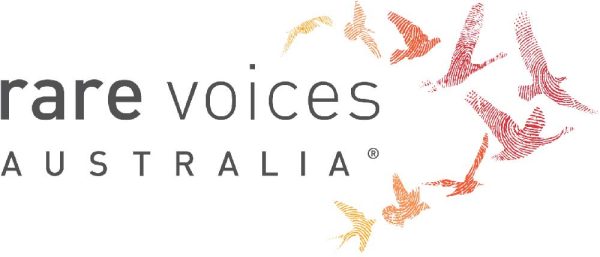Hereditary spastic paraplegia type 56 (SPG56)
Quick Search
- Summary
- Synonyms and Classifications
- Symptoms
- Disability Impacts
- Cause and Inheritance
- Diagnosis
- Treatment
- Clinical Care Team
- Clinical Care Guidelines
- Emergency Management
- Research
- Rare Disease Organisation(s)
- Lived Experience
- Support Services and Resources
- Mental Health
- Other Information
- Useful Links for Healthcare Professionals
Summary
Hereditary spastic paraplegia type 56 (SPG56) is a type of hereditary spastic paraplegia, characterised by stiffness (spasticity) in upper and lower limbs, and often additional neurological features.1 SPG56 is a genetic condition, caused by genetic variant in the CYP2U1 gene, resulting in nerve degeneration (loss of function and eventual death of nerve cells).2,3 SPG56 usually has an early onset and symptoms often worsen over time. In many individuals, the condition is severe, affecting their ability to walk, talk and move independently. SPG56 has been reported in a small number of individuals in medical literature.
Synonyms and Classifications
Synonyms: SPG56, autosomal recessive spastic paraplegia 56, CYP2U1 hereditary spastic paraplegia, spastic paraplegia caused by mutation in CYP2U1.4,5
Universal rare disease classifications provide a common language for recording, reporting and monitoring diseases. Please visit the Rare Disease Classifications page for more information about these internationally recognised classifications.
ORPHA:320411 Autosomal recessive spastic paraplegia type 56
ICD-11: 8B44.01 Autosomal recessive hereditary spastic paraplegia
Symptoms
Symptoms and severity of SPG56 vary widely between individuals and worsens over time.4
Some common signs and features include delayed walking, toe walking, unsteady gait, overactive muscle reflexes (hyperreflexia) in lower limbs, extensor plantar responses (when the sole of feet is stimulated, the toes extend upwards and fan out instead of pointing downwards) and non-verbal.4,5
Individuals with SPG56 may also have intellectual disability, decline in mental capabilities (cognitive decline) and have impaired speech or are non-verbal. Other features may include dystonia, maculopathy (condition affecting macula in the eyes), nerve damage and recurrent urinary tract infections.2,3
Neuroimaging (imaging of the brain and other parts of the central nervous system) in some individuals with SPG56 have also shown differences, such as calcium deposits (brain calcifications), undeveloped myelin sheath which is a layer that protects the nerve cells (hypomyelination) and thinning of the corpus callosum (bundle of nerve fibres that connect the right and left side of the brain).2
Please speak to your medical team to learn more about the signs and symptoms of SPG56.
Disability Impacts
Rare diseases are often serious and progressive, exhibiting a high degree of symptom complexity, leading to significant disability. Majority of the estimated two million Australians living with a rare disease meet the Australian Government’s definition for disability (in accordance to the Australian Public Service Commission and Australian Bureau of Statistics), and many experience severe and permanent disability impacts. If you or someone you care for is experiencing disability-related impacts from a rare condition, please speak with a health or disability professional for advice. Information about relevant disability support can be found at the RARE Portal’s Disability Support Information page.
Cause and Inheritance
SPG56 is a genetic condition caused by disease-causing genetic changes (variants) in the CYP2U1 gene on Chromosome 4.6 CYP2U1 gene produces an enzyme that is important for various cell processes and signaling pathways. In SPG56, these genetic variants in CYP2U1 gene lead to nerves degeneration.3
All individuals have two copies (alleles) of the CYP2U1 gene, one on each chromosome inherited from each parent. SPG56 is an autosomal recessive condition, which means both copies of the CYP2U1 gene must have the disease-causing genetic variants.6 More information on autosomal recessive inheritance pattern can be found at Centre for Genetics Education: Autosomal recessive inheritance.
If you would like to learn more about the inheritance and impact of this condition, please ask your doctor for a referral to a genetic counsellor. Genetic counsellors are qualified allied health professionals who can provide information and support regarding genetic conditions and testing. More information about genetic counselling can be found at:
- Information on Genetic Services
- The National and State Services pages underneath the ‘Genetic Counselling’ sections listed
Diagnosis
There are no published consensus clinical diagnostic criteria for SPG56.
Diagnosis of SPG6 may be made based on medical and family history, neurological and reflex examination to assess the health of nerves, magnetic resonance imaging (MRI) scans to check for differences in the brain and spinal cord, electromyography (EMG) to assess the health of muscles and the nerves that control them, blood tests and genetic testing to confirm the causal gene.3
Please speak to your medical team to learn more about the available diagnostic pathways for SPG56.
Treatment
There is currently no curative treatment for SPG56. Treatment is targeted at managing symptoms (symptomatic management) and involves a multidisciplinary care team. This may include physiotherapy, use of assistive equipment, mobility and medical aids. Information on equipment and assistive technology that may be relevant can be found at The Loop – Your Neuromuscular Resource Hub: Equipment.
Please speak to your medical team to learn more about the possible treatment or management options for your condition. Treatment will depend on an individual’s specific condition and symptoms. It is also important to stay connected to your medical team so that you can be made aware of any upcoming clinical trial opportunities.
Clinical Care Team
Clinical care for rare diseases often involves a multidisciplinary team of medical, care and support professionals. Please note that the information provided here is as a guide and that RVA does not necessarily monitor or endorse specific clinics or health experts.
Healthcare professionals involved in the care of SPG56 may include general practitioners (GP), neurologists, geneticists, physiotherapists and others.5 The need for different healthcare professionals may change over a person’s lifetime and extend beyond those listed here.
Clinical Care Guidelines
We are not aware of any clinical care guidelines for SPG56 in Australia. If you know of any relevant care guidelines, please let us know via the Contribute page.
The following guidance is available from international experts outside Australia; however, there may be information that is not relevant or applicable to the Australian context, and may not be up to date:
- OrphanetAnesthesia: Anaesthesia recommendations for Hereditary spastic paraplegia; last modified in 2019.
- Practical recommendations for the clinical evaluation of patients with hereditary ataxia and hereditary spastic paraplegia developed by clinicians in Spain, includes recommendations for diagnosis and treatment; published in 2022.
Emergency Management
Individuals living with rare diseases may have complex medical issues and disabilities, which are not always visible. It is often useful to refer to their medical history as well as personal information such as a medical card, doctor’s letter, or if available, a rare disease passport, for relevant information.
Research
Our Moon’s Mission: Our Team lists a multi-faceted team of internationally renowned researchers and experts in rare genetic diseases that are involved in steering Our Moon’s Mission forward through dedicated results-driven research to find a cure for SPG56.
There are specific considerations around participating in rare disease research, including clinical trials. It is important to be mindful of issues such as data privacy, research ethics, consent and differences in research regulations between Australia and other countries.
If you are interested in finding clinical trials for your condition, please visit the following websites; however, there may not be any clinical trials available:
It is best to discuss your interest in any clinical trials with your medical team to determine suitability and eligibility.
Please note that RVA does not necessarily monitor or endorse each group/organisation’s operational governance and activities.
Rare Disease Organisation(s)
Australian Organisations:
Genetic Cures for Kids (Our Moon’s Mission)
Website: https://ourmoonsmission.org/
Genetic Cures for Kids (Our Moon’s Mission) is committed to finding a cure for SPG56 through dedicated, results-driven research.
HSP Research Foundation
Website: https://hspersunite.org.au/
Please note that RVA does not monitor or endorse each group/organisation’s operational governance and activities. When engaging with a group, please consider the information on the RARE Portal’s Finding Helpful Peer and Community Supports page.
Lived Experience
SPG56 vary between individuals, and each person’s experience is unique.
Our Moon’s Mission: Our Story has personal stories of people living with SPG56.
If you would like to share your personal story with RVA, please visit the Rare Voices Australia: Share Your Story page. RVA will consider your story for publishing on our website and inclusion on the RARE Portal.
Support Services and Resources
For information on available government and social services that provide support for individuals with a rare disease, please visit the National and State Services pages.
Mental Health
People living with a rare disease, including families and carers, often face unique challenges such as diagnostic delays, misdiagnoses, limited treatment options, and limited access to rare disease specialists and support. These challenges may impact people’s emotional wellbeing and quality of life. Many people find it helpful to seek mental health and wellbeing support to cope with ongoing stress and uncertainty. Connecting with people who have shared experiences through a support group may also be helpful. Information about relevant mental health and wellbeing support can be found at:
- Mental Health and Wellbeing Support for Australians Living with a Rare Disease
- The National and State Services pages underneath the ‘Mental Health’ sections listed
Other Information
Further information on SPG56 can be found at:
Useful Links for Healthcare Professionals
References
- Leeson HC, Goh D, Coman D, Wolvetang EJ. Generation of iPSC lines from hereditary spastic paraplegia 56 (SPG56) patients and family members carrying CYP2U1 mutations. Stem Cell Research. 2022;64. doi: 1016/j.scr.2022.102917
- Parodi L, Pujol C. Hereditary spastic paraplegia type 56: what a mouse can tell – a narrative review. J Bio-X Res. 2022;5(02):55-63. https://mednexus.org/doi/10.1097/JBR.0000000000000127
- Yu H, Zou J, Chen X, et al.Diagnostic journey and genetic analysis of a novel homozygous CYP2U1 mutation causing autosomal recessive spastic paraplegia type 56 (SPG56) in a consanguineous family. BMC Neurol. 2025;25:207. https://doi.org/10.1186/s12883-025-04211-7
- Autosomal recessive spastic paraplegia type 56. https://www.orpha.net/en/disease/detail/320411
- Genetic and Rare Diseases Information Center. Hereditary spastic paraplegia 56. Updated May 2025. https://rarediseases.info.nih.gov/diseases/17480/hereditary-spastic-paraplegia-56
- Online Mendelian Inheritance in Man. Spastic Paraplegia 56, autosomal recessive with or without pseudoxanthoma elasticum; SPG56. Published 23 January 2013. Updated 16 May 2022. Accessed 16 July 2025. https://omim.org/entry/615030
Contributors
This page has been co-developed by Rare Voices Australia (RVA)’s RARE Portal team in consultation with Genetic Cures for Kids (Our Moon’s Mission).
If you are aware of any additional information that may benefit stakeholders with an interest in this page, or if you notice any broken links or inaccurate information, please let us know via the Contribute page.

